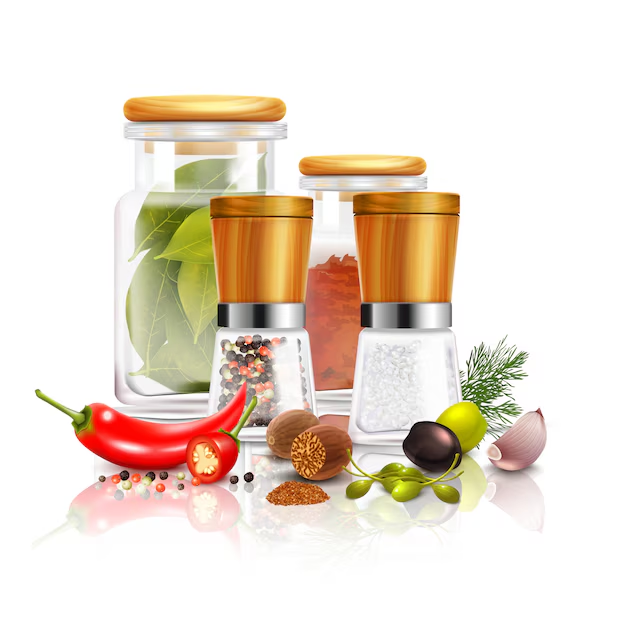Salt and pepper are indispensable in culinary traditions worldwide, enhancing flavors and offering potential health benefits. This comprehensive guide delves into their origins, varieties, uses, and health implications, providing a detailed comparison to help you make informed choices in your cooking endeavors.
The Origins of Salt and Pepper
Salt: A Historical Perspective
Salt, primarily composed of sodium chloride, has been integral to human civilization for millennia. Its preservative qualities were crucial before refrigeration, and it was so valuable that it served as currency in various cultures. The term “salary” even originates from “salarium,” the Latin word for salt money.
Pepper: The King of Spices
Pepper, derived from the berries of the Piper nigrum plant, is native to South India. Historically, it was a highly prized commodity, often referred to as “black gold.” Its trade significantly influenced exploration and economic exchanges between the East and the West.
Varieties of Salt
Understanding the different types of salt can enhance your culinary creations:
- Table Salt: Finely ground and often iodized to prevent iodine deficiency. It contains anti-caking agents to prevent clumping.
- Sea Salt: Harvested through the evaporation of seawater, retaining trace minerals that can influence its flavor and color.
- Kosher Salt: Known for its coarse texture, it’s favored in cooking for its ease in pinching and even seasoning.
- Himalayan Pink Salt: Mined from ancient sea deposits, it contains trace minerals like iron oxide, giving it a distinctive pink hue.
Varieties of Pepper
Peppercorns come in several forms, each offering unique flavors:
- Black Pepper: Harvested green and dried until they blacken, providing a robust and pungent flavor.
- White Pepper: Fully ripened berries with the outer skin removed, resulting in a milder taste compared to black pepper.
- Green Pepper: Picked unripe and either air-dried or preserved, offering a fresh and slightly spicy flavor.
- Pink Pepper: Sourced from a different plant species, it has a delicate, sweet, and fruity flavor.
Culinary Uses
Salt in Cooking
Salt enhances the natural flavors of ingredients and plays a vital role in various cooking techniques:
- Seasoning: Balances sweetness and suppresses bitterness, making dishes more palatable.
- Preservation: Inhibits bacterial growth, extending the shelf life of foods like meats and pickles.
- Texture Enhancement: In baking, salt strengthens gluten, providing structure to baked goods.
Pepper in Cooking
Pepper adds depth and heat to dishes:
- Flavoring: Imparts a spicy kick, enhancing the complexity of recipes.
- Garnishing: Freshly ground pepper elevates the presentation and taste of finished dishes.
- Marinades and Rubs: Combines with other spices to create flavorful coatings for proteins.
Health Implications
Salt: Benefits and Considerations
Salt is essential for bodily functions, including nerve transmission and muscle contraction. However, excessive intake can lead to health issues:
- Hypertension: High sodium levels are linked to increased blood pressure, elevating the risk of heart disease and stroke.
- Recommended Intake: Health authorities suggest limiting sodium intake to 2,300 milligrams per day, approximately one teaspoon of table salt.
Pepper: Health Benefits
Pepper, particularly black pepper, contains piperine, a compound with several health benefits:
- Antioxidant Properties: Neutralizes free radicals, potentially reducing the risk of chronic diseases.
- Enhanced Nutrient Absorption: Piperine increases the bioavailability of nutrients like curcumin, the active ingredient in turmeric.
- Digestive Health: Stimulates the production of digestive enzymes, aiding in digestion.
Comparison Chart: Salt and Pepper Varieties
To assist in selecting the appropriate type of salt or pepper for your culinary needs, refer to the following comparison:
| Type | Source | Flavor Profile | Common Uses |
| Table Salt | Mined or evaporated seawater | Clean, straightforward salinity | Baking, general seasoning |
| Sea Salt | Evaporated seawater | Briny, with mineral undertones | Finishing dishes, salads |
| Kosher Salt | Mined salt deposits | Pure, less intense than table salt | Meat seasoning, cooking |
| Himalayan Pink Salt | Ancient sea deposits | Mild, slightly sweet | Finishing dishes, grilling |
| Black Pepper | Unripe berries of Piper nigrum | Pungent, spicy | Universal seasoning |
| White Pepper | Ripe berries of Piper nigrum | Earthy, less pungent than black pepper | Light-colored sauces, soups |
| Green Pepper | Unripe berries of Piper nigrum | Fresh, mildly spicy | Pickling, sauces |
| Pink Pepper | Berries of Schinus molle | Sweet, fruity, mildly peppery | Desserts, salads |
Practical Tips for Using Salt and Pepper
- Freshness Matters: Use freshly ground pepper and high-quality salts to maximize flavor.
- Proper Storage: Keep both in airtight containers away from moisture to maintain their quality.
- Mindful Seasoning: Season dishes gradually, tasting as you go to avoid over-seasoning











